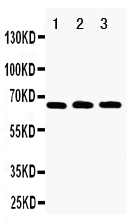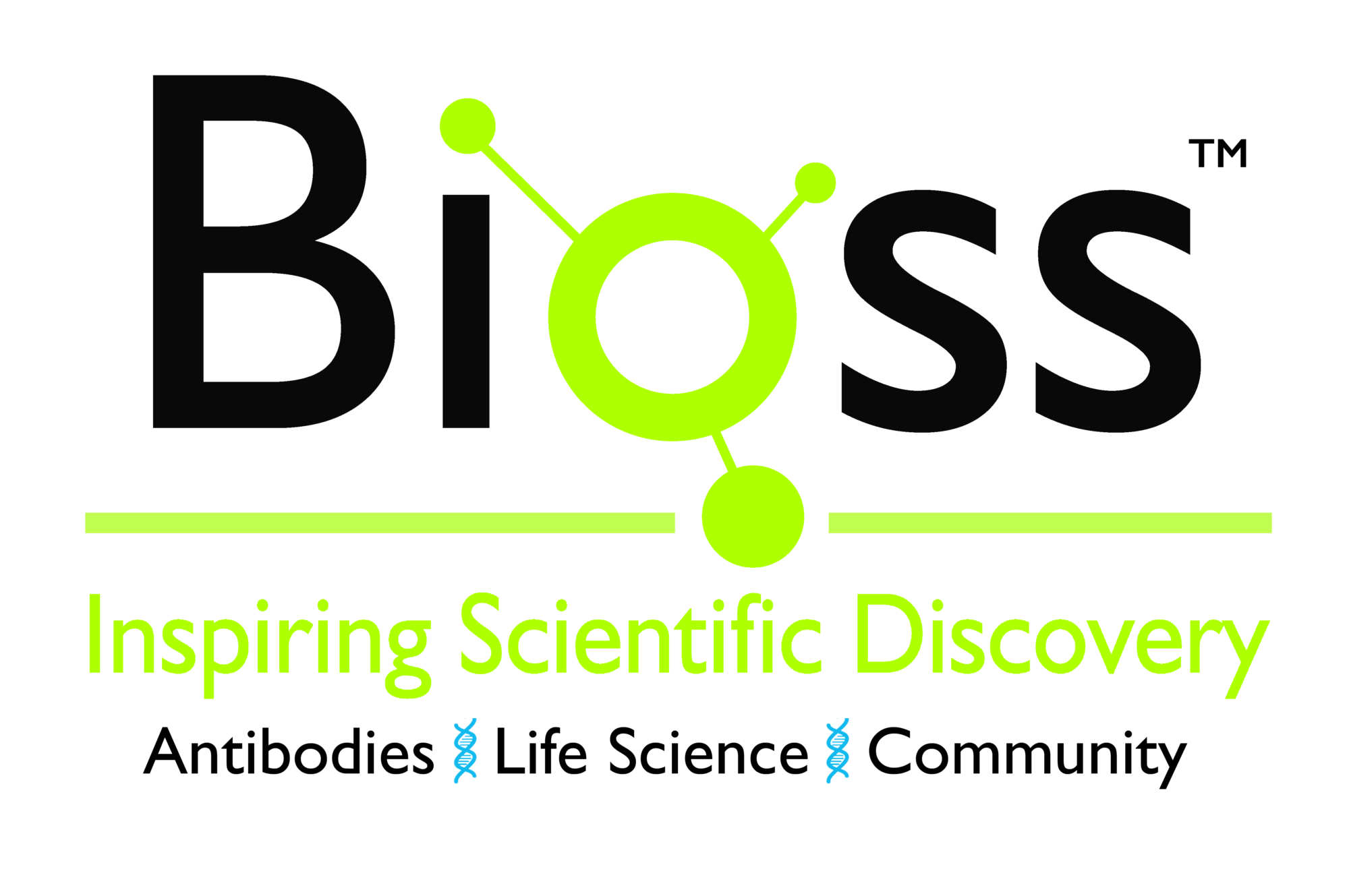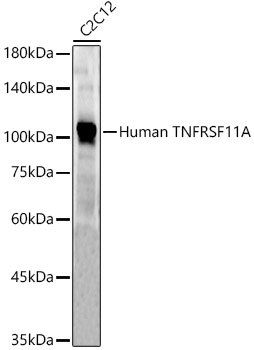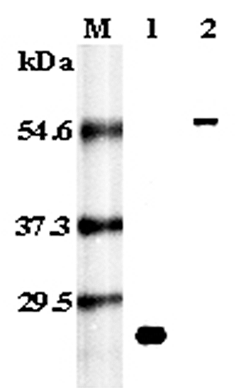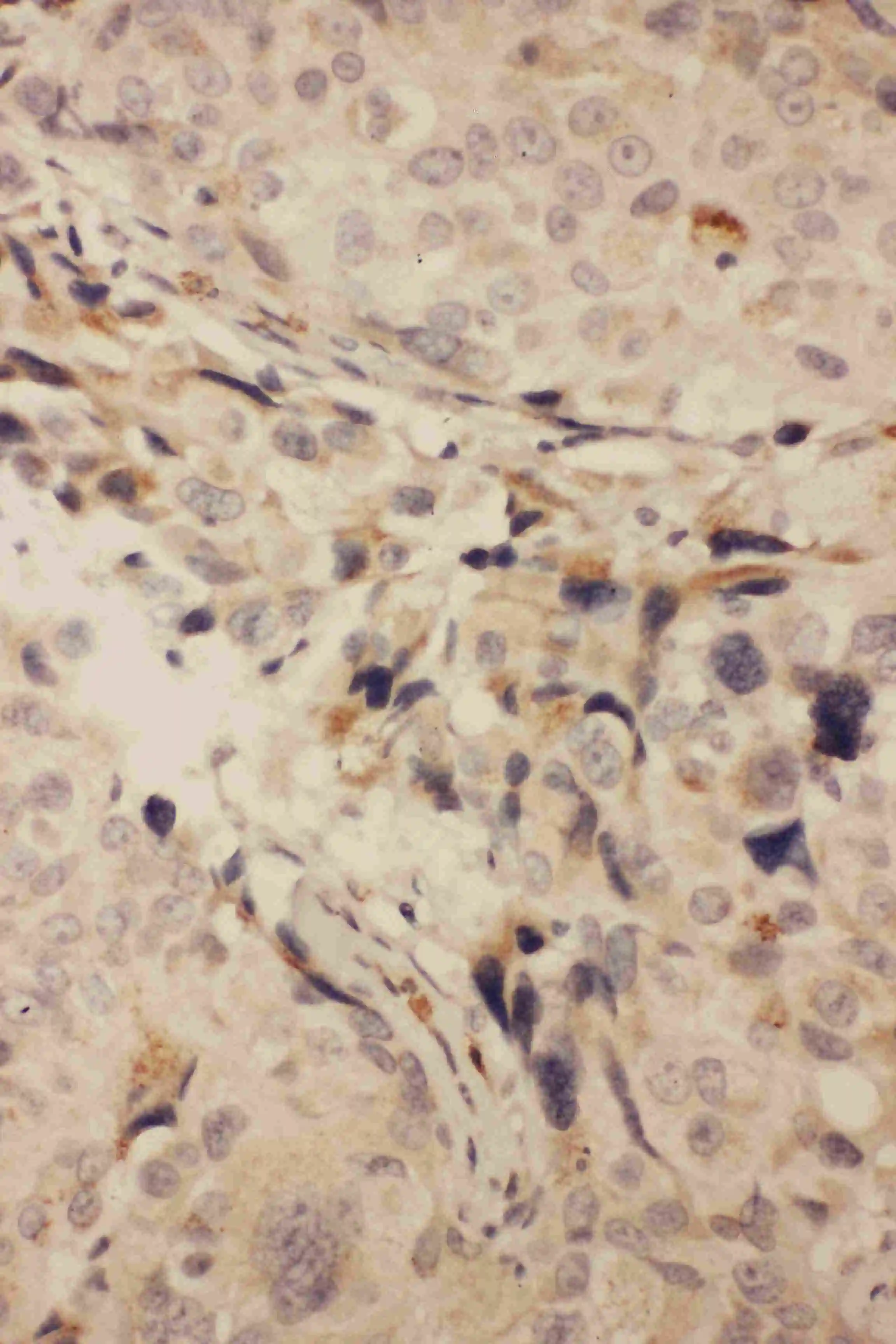
IHC-P analysis of human mammary cancer tissue using GTX11697 RANK antibody.
RANK antibody
GTX11697
ApplicationsWestern Blot, ImmunoHistoChemistry, ImmunoHistoChemistry Paraffin
Product group Antibodies
TargetTNFRSF11A
Overview
- SupplierGeneTex
- Product NameRANK antibody
- Delivery Days Customer9
- Application Supplier NoteWB: 0.1-0.5microg/ml. IHC-P: 0.5-1microg/ml. *Optimal dilutions/concentrations should be determined by the researcher.Not tested in other applications.
- ApplicationsWestern Blot, ImmunoHistoChemistry, ImmunoHistoChemistry Paraffin
- CertificationResearch Use Only
- ClonalityPolyclonal
- Concentration500 ug/ml
- ConjugateUnconjugated
- Gene ID8792
- Target nameTNFRSF11A
- Target descriptionTNF receptor superfamily member 11a
- Target synonymsCD265, FEO, LOH18CR1, ODFR, OFE, OPTB7, OSTS, PDB2, RANK, TRANCE-R, TRANCER, tumor necrosis factor receptor superfamily member 11A, Paget disease of bone 2, TRANCE receptor, familial expansile osteolysis, loss of heterozygosity, 18, chromosomal region 1, osteoclast differentiation factor receptor, receptor activator of NF-KB, receptor activator of nuclear factor-kappa B, tumor necrosis factor receptor superfamily, member 11a, NFKB activator
- HostRabbit
- IsotypeIgG
- Protein IDQ9Y6Q6
- Protein NameTumor necrosis factor receptor superfamily member 11A
- Scientific DescriptionThe protein encoded by this gene is a member of the TNF-receptor superfamily. This receptors can interact with various TRAF family proteins, through which this receptor induces the activation of NF-kappa B and MAPK8/JNK. This receptor and its ligand are important regulators of the interaction between T cells and dendritic cells. This receptor is also an essential mediator for osteoclast and lymph node development. Mutations at this locus have been associated with familial expansile osteolysis, autosomal recessive osteopetrosis, and Paget disease of bone. Alternatively spliced transcript variants have been described for this locus. [provided by RefSeq, Aug 2012]
- Storage Instruction-20°C or -80°C,2°C to 8°C
- UNSPSC12352203

